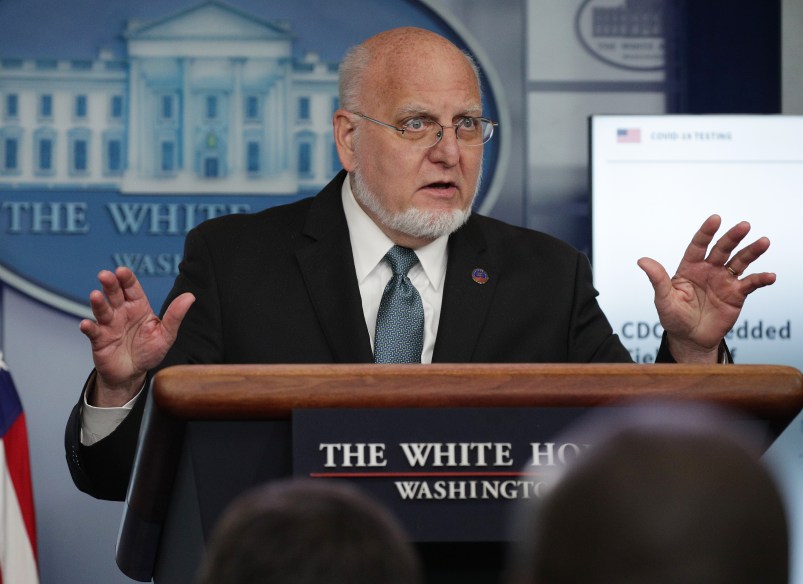After briefly acknowledging that the virus which causes COVID-19 spreads via the air, the Centers for Disease Control abruptly took down the post.
In a section of the agency’s website titled “How COVID Spreads,” the CDC acknowledged for the first time that “droplets and airborne particles” can stay in the air and infect others – a mode of spread that has been supported by widespread evidence for months, and which President Trump acknowledged in a February phone call with Bob Woodward.
“In general, indoor environments without good ventilation increase this risk,” the guidance read.
But on Monday, the CDC removed the guidance, saying that it had been “posted in error.”
“CDC is currently updating its recommendations regarding airborne transmission of SARS-CoV-2 (the virus that causes COVID-19),” the note reads.

The sudden veering away from widely accepted scientific guidance comes after months of scandal at the CDC, revolving around various episodes in which Trump administration appointees have contorted the agency’s recommendations to match political exigencies.
In fact, this is not the first time that the CDC’s website has played a role in these scandals. The agency took down guidance on its website last week which advised against testing asymptomatic people who had been in close contact with those infected, a piece of faulty advice that was widely seen as an effort to dampen testing numbers in the run-up to the presidential election.
The role that aerosol transmission plays in spreading the virus that causes COVID-19 is extremely important. Whereas droplets can only spread short distances, viruses that transmit via smaller, lighter aerosols can infect people much further away. Some researchers have argued that this mode of transmission partly explains how and why the disease has spread so quickly.
But the significance is not limited to scientific understanding alone. The recommendations that come with aerosol transmission are far more restrictive, including the closure of many indoor activities where masks are impossible to wear. The now-removed CDC guidance cited “choir practice, in restaurants, or in fitness classes” as situations that were particularly dangerous.
Beneath the message claiming that the post had been made in error, the CDC added more language suggesting that the virus “is thought to spread mainly through close contact from person-to-person” and that “we are still learning about how the virus sreads and the severity of illness it causes.”
The official U.S. death toll from the virus passed 200,000 this weekend.
The change also comes after the departure of GOP operative Michael Caputo from the post of assistant sectary for communications at Health and Human Services, which oversees the CDC. Caputo took a 60-day leave after reporting showing that he and an aide demanded editorial control over weekly CDC reports on the spread of COVID-19 and after he ranted on a Facebook Live broadcast that the CDC was composed of leftist hit squads.
Aerosol transmission also means that social distancing and extensive ventilation would be required before opening indoor establishments like schools, restaurants, and gyms to allow enough airflow and separation to diminish the likelihood of catching the deadly virus.
Experts in epidemiology and infectious disease have argued for months that COVID-19 spreads via the air, citing case studies of outbreaks in which unmasked people fell ill with COVID-19 after spending time indoors and nearby someone who was infected.
The CDC itself has published much of the evidence to that effect, including a notorious case involving a choir rehearsal in Washington state in which case half of the 61 people at the practice were infected.
The World Health Organization acknowledged that the virus spreads via aerosol in July, in a move that was widely panned for being far too late and behind the science.






